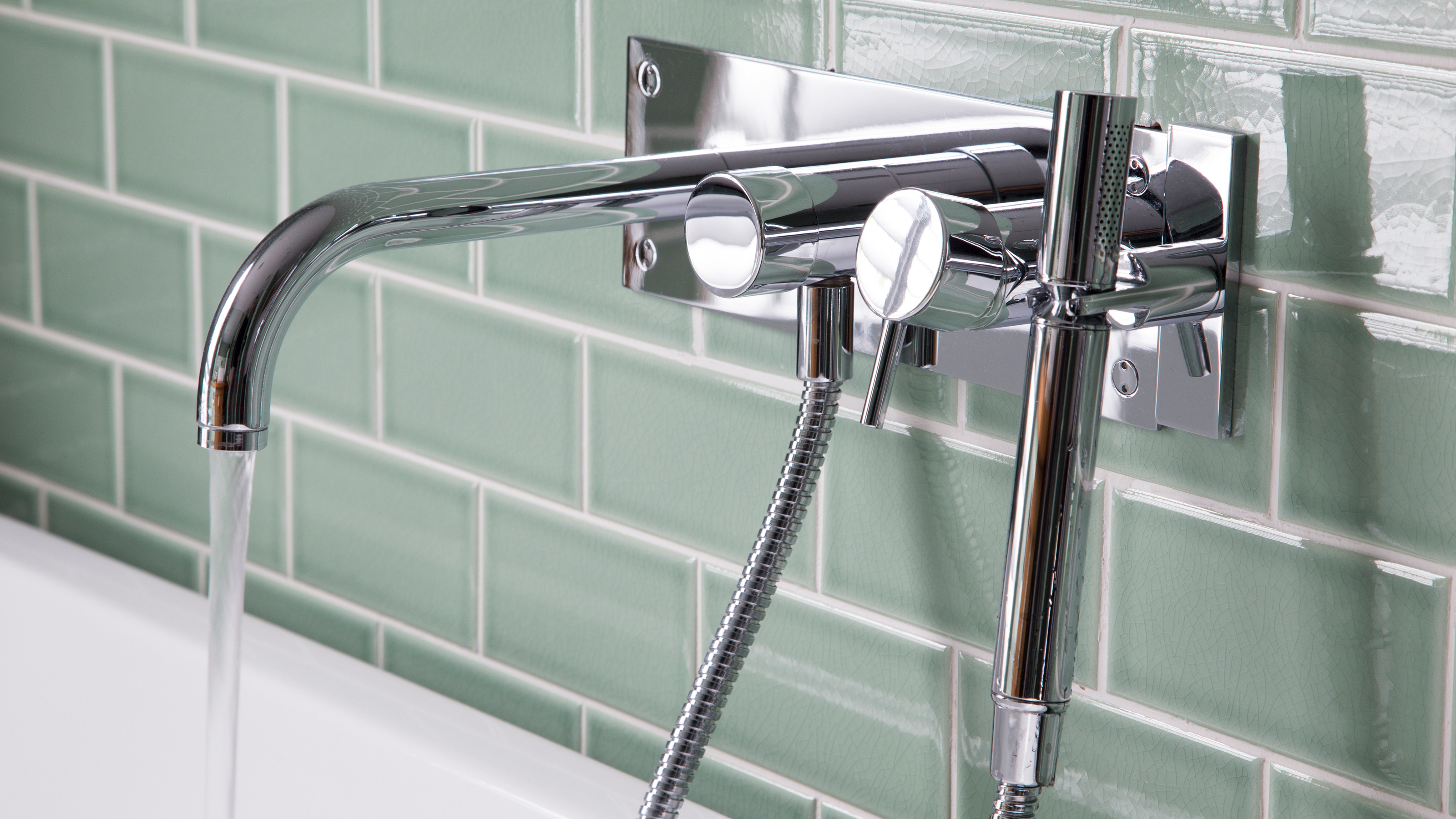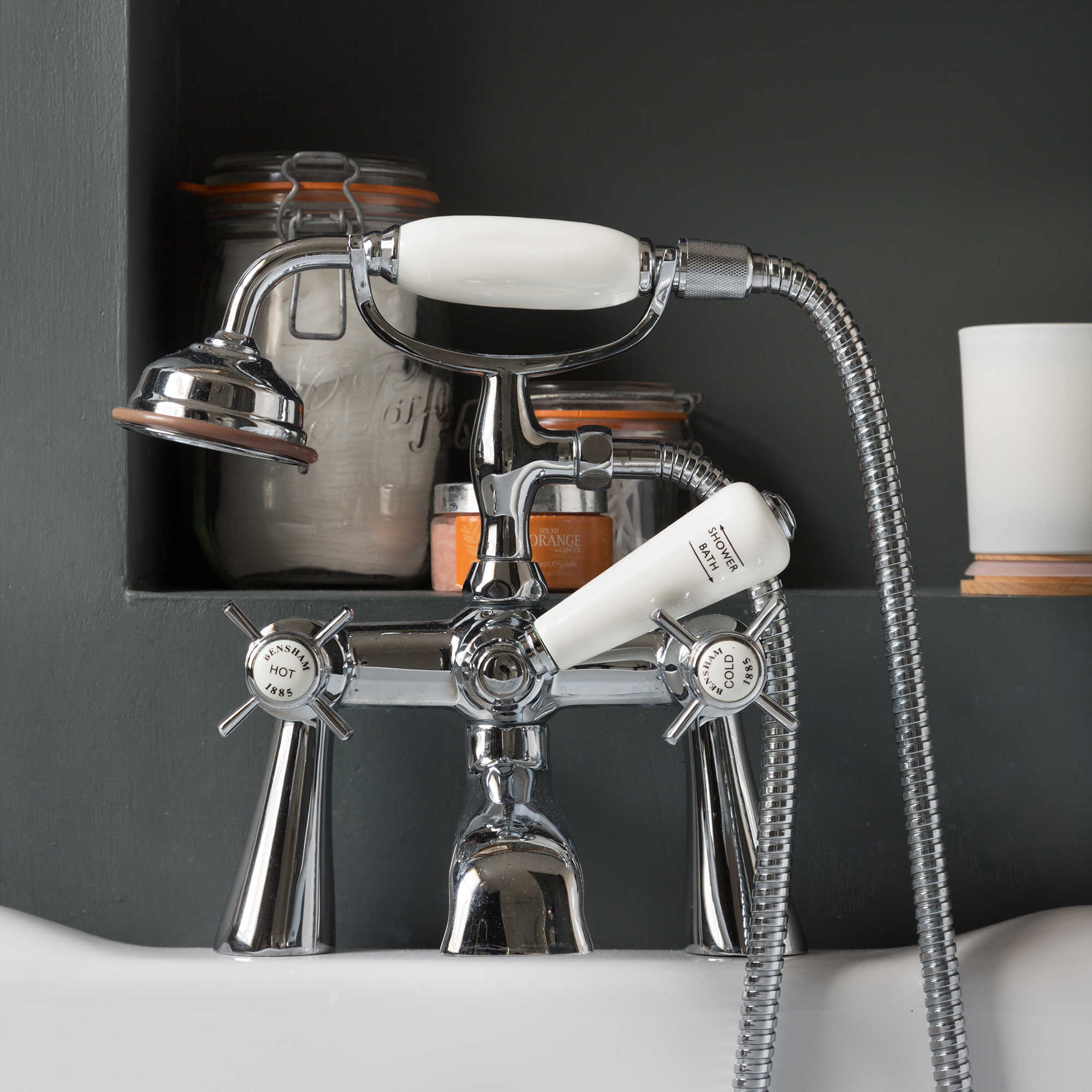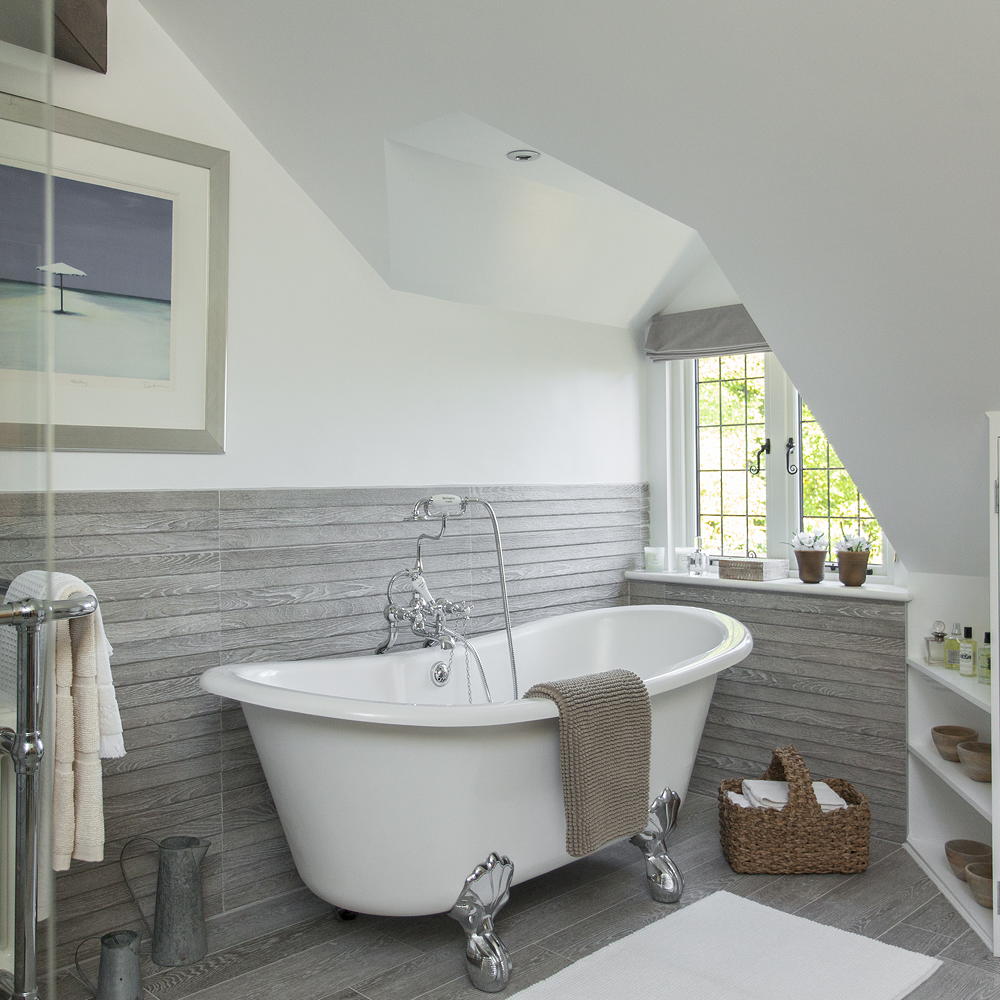How to remove limescale from taps - 5 quick and easy cleaning methods
It can be incredibly stubborn, but if you need to know how to remove limescale from taps, there are some ways to do so with very little effort


Limescale can sometimes feel like the bane of our cleaning lives – it’s unsightly, difficult to remove, and gets almost everywhere, including taps, kettles and sinks (especially if you live in a hard water area). But if you’re wondering how to remove limescale from taps, you’re in luck – as we’ve detailed multiple methods to help you scrub the tricky substance from your bathroom or kitchen sinks.
Made up mainly of calcium and magnesium, limescale is the chalky residue that gets left behind when hard water evaporates. It essentially bonds onto whatever surface it is left on, making it especially tricky to clean.
If you’re planning how to clean a bathroom or kitchen, be aware that it's pretty much essential to regularly attend to limescale. And rest assured, there are plenty of ways to get rid of it - but it's all about knowing the right methods, and using the correct tools for the job to avoid damaging your taps.
How to remove limescale from taps - 5 methods
Richard Ghinn, bathroom expert from Tradebase, explained the difficult nature of limescale, saying, 'It becomes more difficult to remove the longer you leave it to build up. The minerals in limescale harden over time, and can cause irreparable damage to fittings, toilets, pipes and even appliances in the home if cleaning it isn't part of your regular routine.'
1. Remove limescale from taps using a dedicated spray

There are a couple of dedicated limescale sprays out there. The HG limescale remover and Viakal are among some of the best cleaning products specially created to remove limescale from almost anything.
You can buy these from pretty much any good supermarket, or Amazon. However, always check that they are approved for use on your tap material.
Typically, all you need to do is spray whatever cleaner you're using on your taps (or apply with a microfibre cloth), leave it to sit for anywhere between 10 minutes to half an hour, and then rinse it off.
Sign up to our newsletter for style inspiration, real homes, project and garden advice and shopping know-how
Dedicated limescale removers can be tough on your hands to we'd recommend wearing gloves. You should then buff the taps with a dry cloth for a final flourish.
2. How to remove limescale from taps using lemon

Lemons are a great natural cleaning solution, and can be very effective at breaking down limescale due to their acidic nature, so they're often a popular option when it comes to how to remove limescale from taps.
Richard Ghinn, bathroom expert at Tradebase advises, 'Remember to rinse well with water afterwards,' as you don't want to leave the lemon to sit for too long, as it could continue to erode your taps after getting rid of the limescale.
What you'll need
- A lemon (or lemon juice)
- Toothbrush (clean)
- Paper towel
- Microfibre cloth
- Zip-lock bag
- Elastic band
Method
For this method, you'll likely have most of the essentials you’ll need to hand already. Plus, it’s an all-natural method that doesn’t use any chemicals, making it ideal for using in your bathroom and kitchen.
For a small amount of build-up on your taps:
1. Rub on the lemon juice and scrub it gently with a cloth or toothbrush. You could also spray it on if you prefer to dispense your lemon juice into a spray bottle first.
2. Then, rinse it off with water.
3. Buff the taps with a separate dry cloth.
If you have a larger limescale deposit:
1. For the taps themselves, soak a cloth or paper towel in lemon juice.
2. Then, drape it over the taps and leave it there for about an hour.
3. For the spout, fill your zip-lock bag up with lemon juice, and tie it around the spout, with either a hairband or elastic band. Leave for around an hour.
4. After an hour, remove the cloth and the bag, and rinse the entire system with water.
5. Dry and buff the taps with a cloth.
3. How to remove limescale from taps with vinegar
You can use vinegar to remove limescale from taps in a similar way to which you'd use lemon. It's another great natural cleaning solution and once again, its acidic composition will work brilliantly at melting away stubborn limescale deposits.

What you'll need
- White vinegar (not cooking vinegars such as white wine vinegar!)
- Water
- A cloth
Method
1. Mix together white vinegar and water in equal parts.
2. Submerge your cleaning cloth into the solution.
3. Once saturated, use the cloth to gently scrub away at the limescale.
Pro tip: If you have lots of built-up Polly Shearer, kitchen and bathroom expert at Tap Warehouse, recommends extending the soaking time.
'Depending on how severe the limescale is, you can soak the affected area in the white vinegar mixture for up to 30 minutes before scrubbing it away too,' she explains.
4. How to remove limescale from taps using toothpaste
Another natural method for stubborn limescale is toothpaste, Richard Ghinn explains. 'If you’re finding it [limescale] builds up around the base of the tap, and around where the water comes out, there’s a simple solution, using something you already have in your bathroom – toothpaste,' he explains.
'The slightly abrasive nature of toothpaste – containing bicarbonate of soda – does a great job in removing stubborn limescale.'
What you'll need
- Toothpaste
- Water
- A cloth
Method
1. Squeeze a pea size amount of toothpaste onto a damp cloth
2. Then, rub it over the affected areas of your tap.
3. Rinse away with water, and with a separate clean cloth if it's sticking to your tap.
4. Then buff the taps, removing the leftover water to prevent further limescale build-up.

5. How to remove limescale from taps using bicarbonate of soda
Finally, you can use bicarbonate of soda in various different ways to remove limescale from taps. However, arguably the easiest one is to combine water and bicarbonate of soda (baking soda), to create a paste.
What you'll need
- Bicarbonate of soda
- Water
- A soft cloth
Method
1. 'Mix ½ a cup of bicarbonate of soda with enough warm water to create a paste', tap specialists Fohen says. You may need to add more or less water depending on the texture of your mixture.
2. With a soft cloth, gently rub the mixture over any limescale marks on your tap.
3. Once you're done scrubbing (gently!), rinse with more water.
4. Then, 'wipe dry to prevent spotting,' Fohen says.
You can also use this method after cleaning with lemon, if you're left with any limescale spots that are particularly difficult to remove.
What’s the best limescale remover for taps?

This generally depends on your personal preference – the best option for you when it comes to how to remove limescale from taps might simply be the one where you have the correct tools to hand.
However, if you prefer a more natural approach, the best limescale remover will likely be either lemon, vinegar, or bicarbonate of soda. On the other hand, if you've got a lot of chalky build-up, toothpaste or a chemical cleaner, such as Viakal, could be a better, more abrasive, option. Commercial cleaners will also be better for you if you don't have things like a lemon or bicarbonate of soda to hand often.
When thinking about the best limescale remover for you, it also pays to consider the finish of your bathroom or kitchen taps, to ensure you don't do any damage whilst cleaning.
Ghinn explains, 'Whilst chrome remains a classic choice, the alternatives such as gold, matt black, and brass finishings – while some of our favourite bathroom ideas – all need some extra care when it comes to preventing limescale damage.'
If you do have this finish, he advises, 'The best approach to ensure you are not pulling off any of the finish on the taps is to not leave any cleaner to soak. You also want to avoid harsh scrubbing. To stay on top of it, use white vinegar and water 50/50 mix on a cloth and gently wipe. Do this regularly and you’ll avoid the build-up and damage from hardened limescale.'
How do you get rid of thick limescale on taps?
You can use any one of the above methods to tackle thick limescale on taps, but the best tip is to ensure you leave any solution you do use to soak, to really break down the layers of build-up. But as Ghinn noted, make sure you don't leave a solution to soak too long if you have more delicate finishes. Test the area first before applying.
If you have got thick limescale, it's worth noting that staying on top of any limescale that appears is key, to prevent it from building up once again. To do this, Ghinn advises, 'Clean little and often. Most of us leave the bathroom cleaning to once a week, but this, unfortunately, invites limescale to grow – and we don’t even notice until it’s too late.
'Try and give your taps a wipe every few days, perhaps when you’re brushing your teeth. This will ensure limescale has no time to stick around.'
Does white vinegar and bicarbonate of soda remove limescale?
Yes – as mentioned above, you can use either white vinegar or bicarbonate of soda to remove limescale on your taps.
But if you need something more heavy-duty, you can use a combination of the two, to create a limescale-busting paste.
To do this, mix together two parts bicarbonate with one part white vinegar. Once it has formed a sort of paste, you can apply this to areas where limescale has built-up, and scrub gently to remove it. You can also leave this paste to sit, if dealing with more stubborn limescale spots. This mix is also a great option if you're wondering how to clean bathroom tiles.
Once again, be careful using the formula on more delicate finishes though, as it may be too abrasive. If you're concerned, test it out on a small patch of your tap first.

Amy Hunt is an experienced digital journalist and editor, now working in a freelance capacity specialising in homes and interiors, wellness, travel and careers. She was previously Lifestyle Editor at woman&home, overseeing the homes, books and features sections of the website. Having worked in the industry for over eight years, she has contributed to a range of publications including Ideal Home, Livingetc, T3,Goodto, Woman, Woman’s Own, and Red magazine.